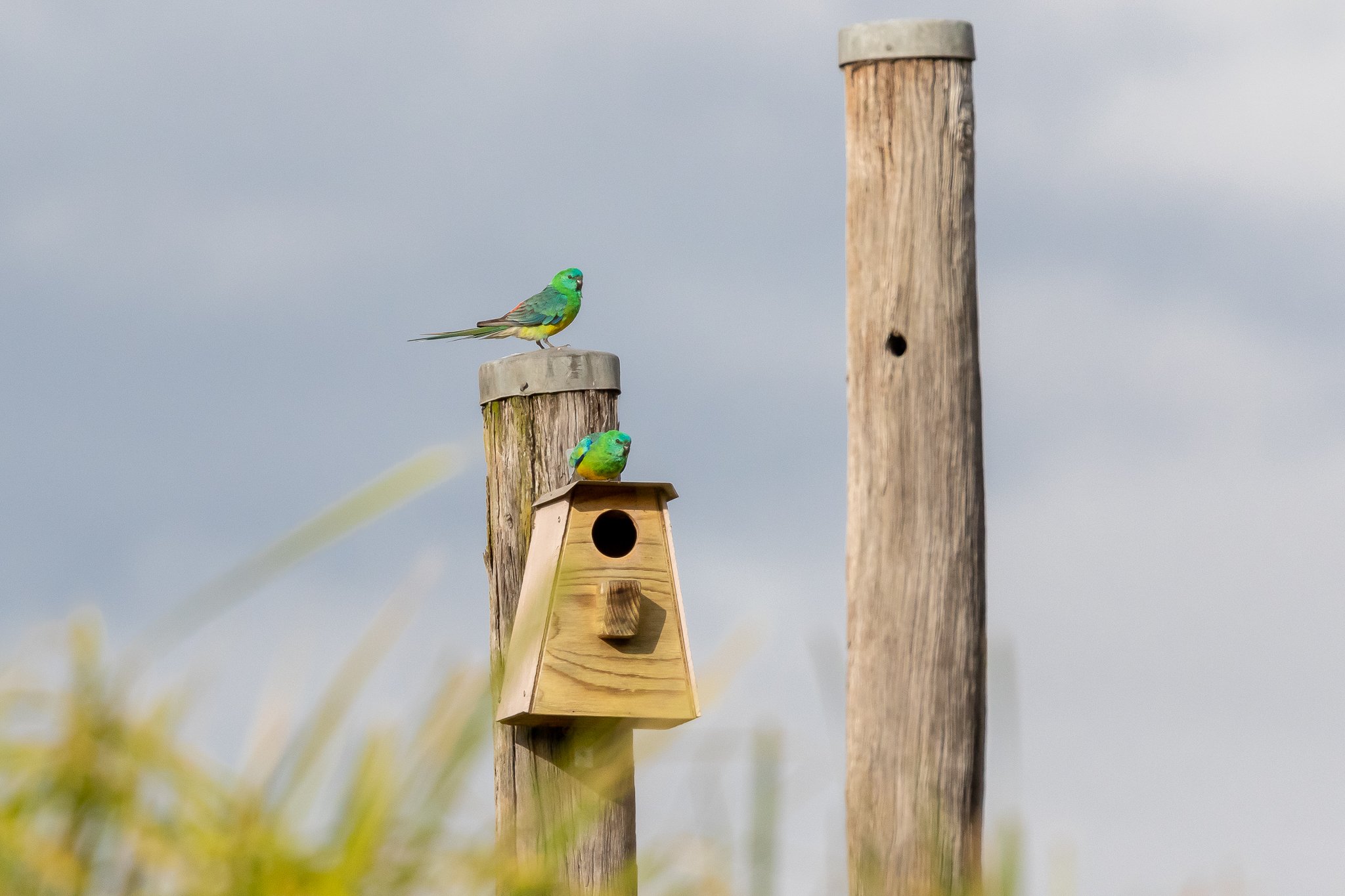The 300 hectares of bushland and waterways of Sydney Olympic Park demonstrate how nature can be nurtured even in the middle of a sprawling city. In addition to the waterbirds there are many birds of the bush and grassland, for a grand total of over 200 bird species in the park.
This juvenile male Superb Fairy-wren sports an unusual and beautiful livery, soon to change to the spectacular blue coat of the adult male Fairy-wren.
Red-rumped Parrots are often associated with the open farmlands of the west, but are here quite at home in the fields of Sydney Olympic Park. The dozen or so nest boxes provided for them at the Archery Centre are well used. Last week I counted eight birds in just a few minutes.
This Olive-backed Oriole was singing for quite a while before being spotted and photographed in the mangroves on the shores of Homebush Bay.
At the Waterbird Refuge this young Common Koel was calling for its foster parent, a Red Wattlebird waiting nearby. Unfortunate Red Wattlebirds are often selected by Koels to host their offspring.
An Australian Raven feeding down on the salt marsh of the Badu Mangroves, on the eastern side of Sydney Olympic Park. There appeared more than adequate food available for the group of five feeding.












